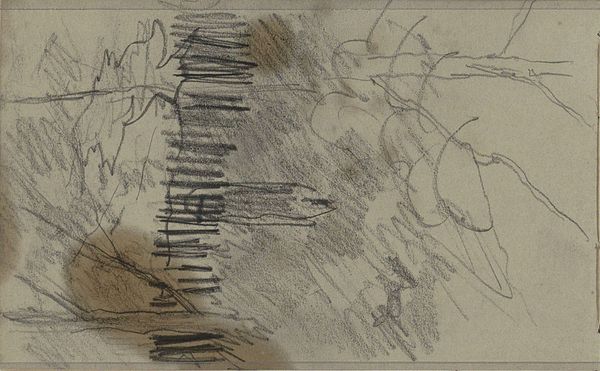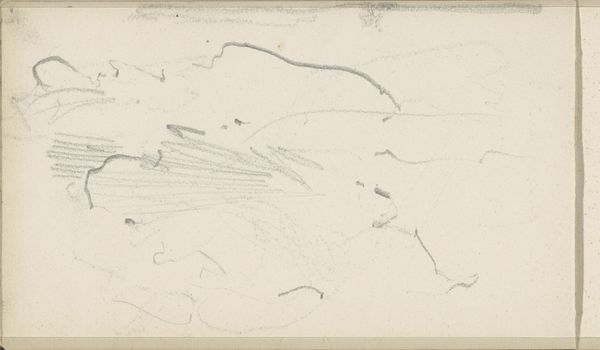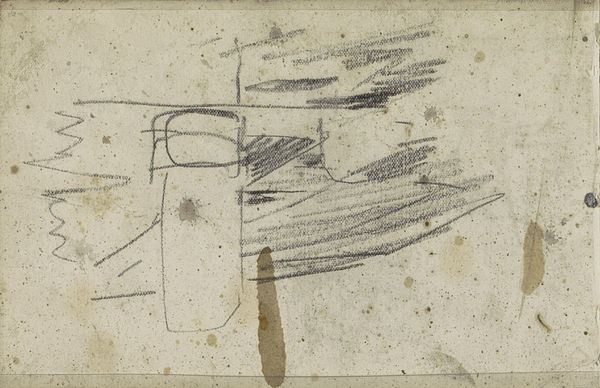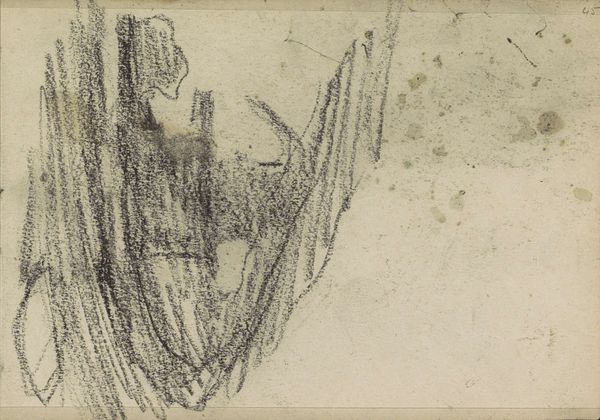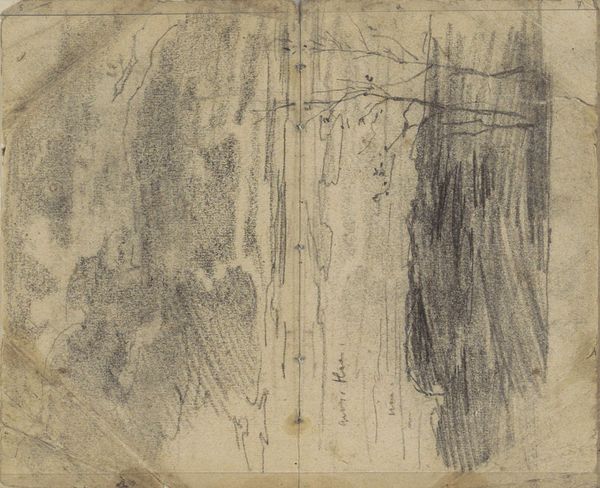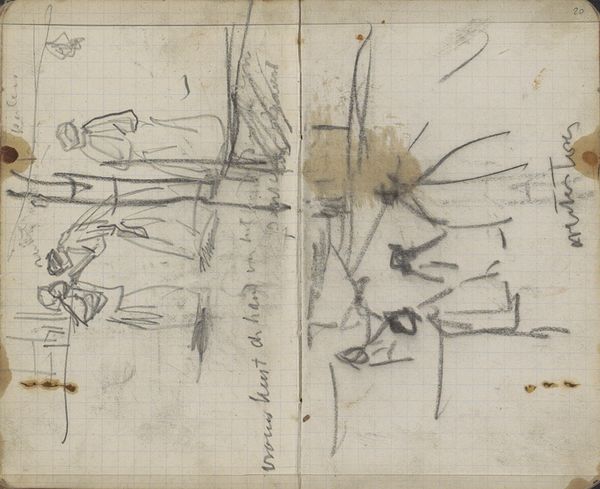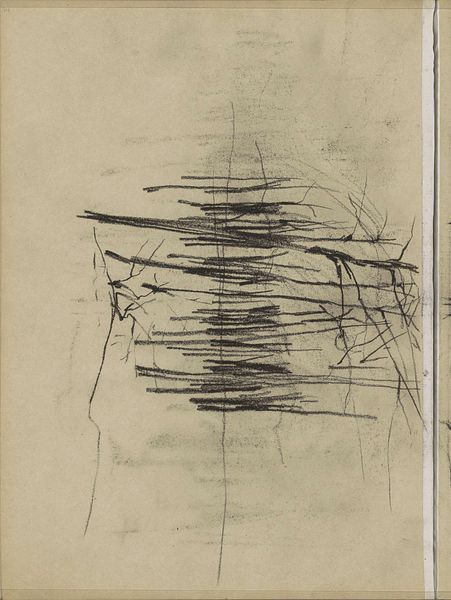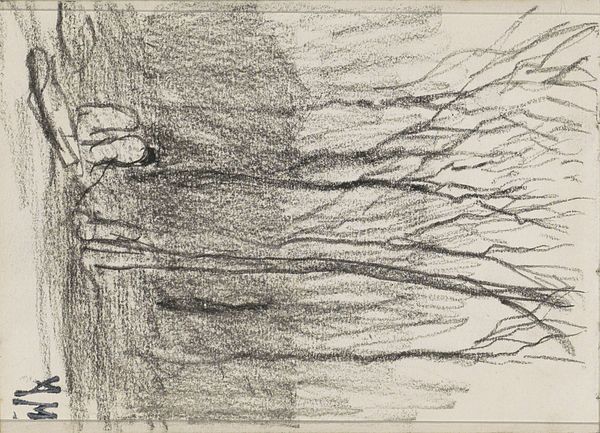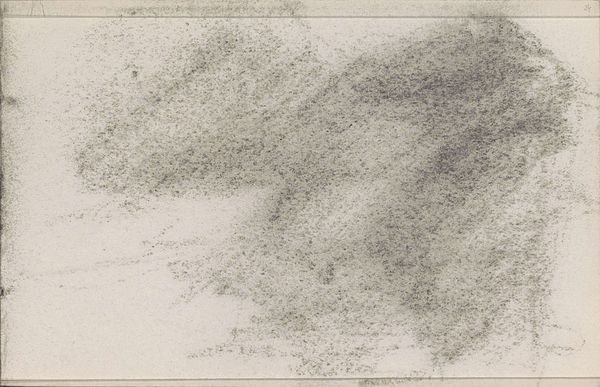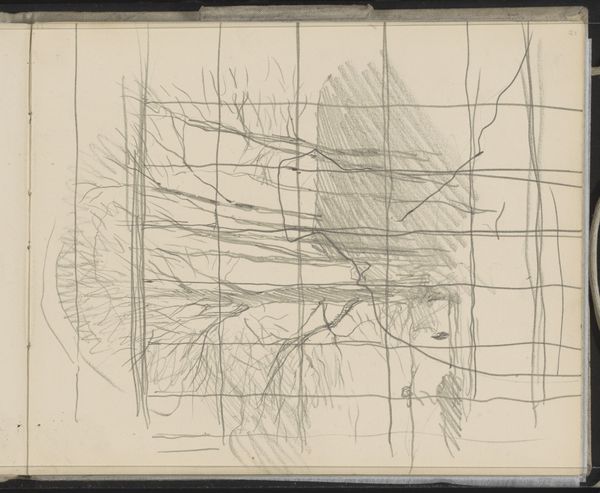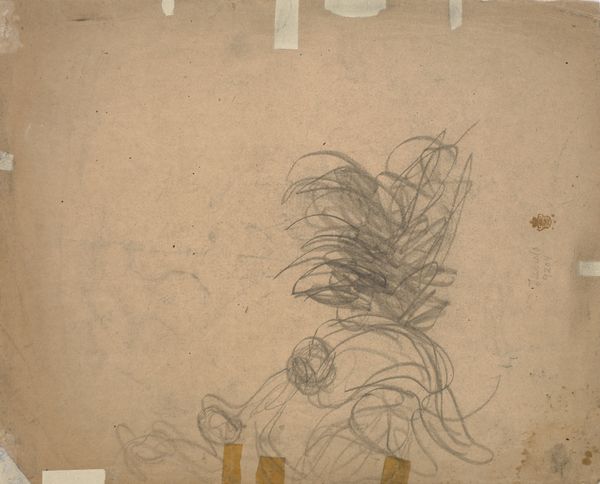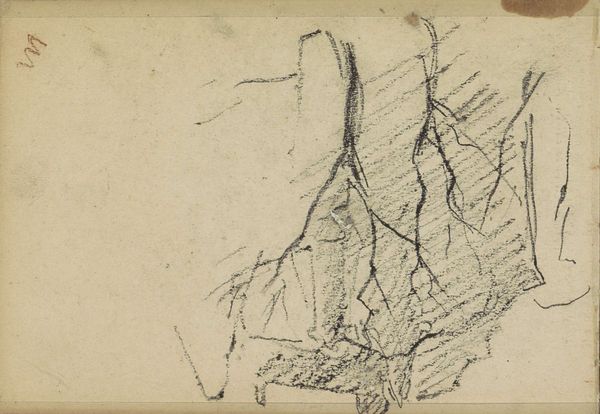
Copyright: Rijks Museum: Open Domain
Curator: Looking at this intriguing sketchbook page from Willem Witsen, made sometime between 1875 and 1923, I am struck by its stark contrast. The composition, rendered in graphite on paper, presents an enigmatic energy. Editor: It feels incomplete, doesn’t it? There's a tension between the clearly worked right-hand side and the emptiness of the left. Is it meant to represent absence, or perhaps potential? It feels almost ominous. Curator: Well, sketchbooks provide a raw glimpse into an artist's creative process, unrestrained and immediate. Witsen's active role in the Dutch revival of etching adds another layer. One has to wonder what he sought to represent or document through quick and raw studies, almost like visual annotations. Editor: Perhaps it was simply a form of visual shorthand. The heavy shading on the right definitely evokes a feeling of density, a build-up of something, perhaps suppressed feelings ready to explode onto the page. How much of this reflects Witsen’s political sentiments or observations? He seemed very attuned to the rapidly transforming Amsterdam. Curator: Exactly. Knowing the period—the late 19th, early 20th century—with its significant socio-political shifts, there is a palpable sense of anxiety. These sketches may have held personal, symbolic meaning for Witsen within a broader landscape of changing social realities and urban development. I would imagine, Witsen uses stark mark making to reveal social undercurrents within this context. Editor: It also underscores the democratizing function of sketchbooks. Unlike finished artworks destined for galleries, sketches offer immediacy, making artistic exploration more accessible. The raw intimacy between artist, paper and idea creates art with its own value. Curator: Absolutely. Its unfinished character emphasizes art’s potential for democratic intervention—rough sketches bypassing institutions to get quickly in front of the people, capturing the raw zeitgeist, while the quick, imperfect mark becomes the powerful social gesture. Editor: Ultimately, "Studie" is more than just an incomplete work; it is evidence of where artistry stems from. A view into the workshop from which masterpieces emerge. Curator: Indeed. Its enduring intrigue lies in how such simple lines contain volumes about society's continuous evolution.
Comments
No comments
Be the first to comment and join the conversation on the ultimate creative platform.
